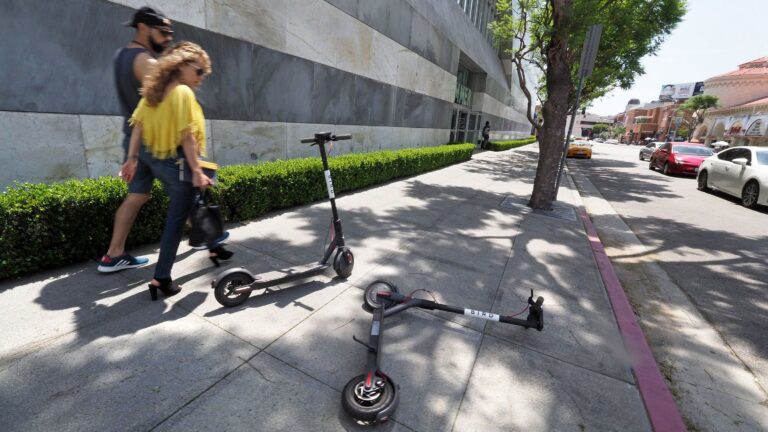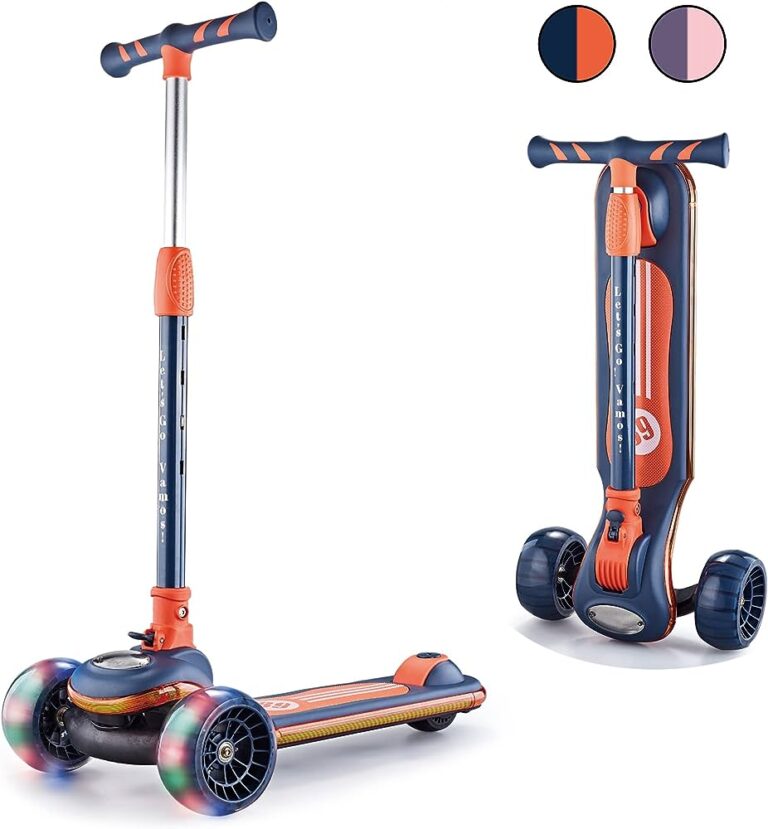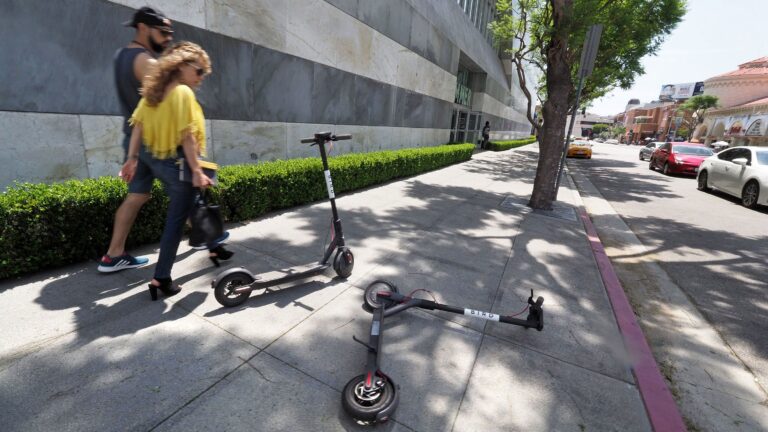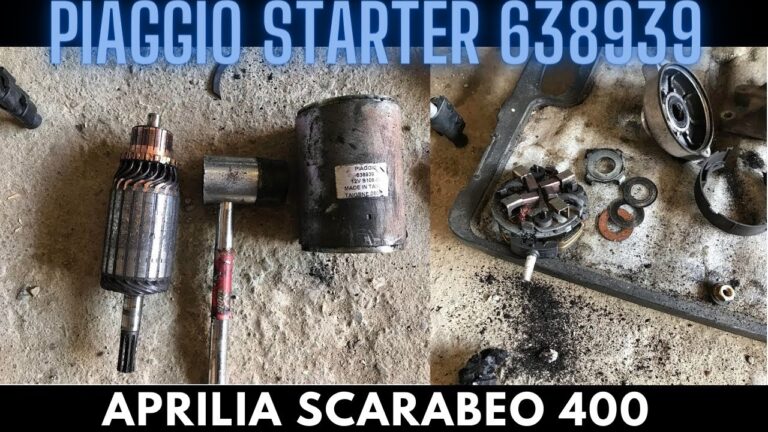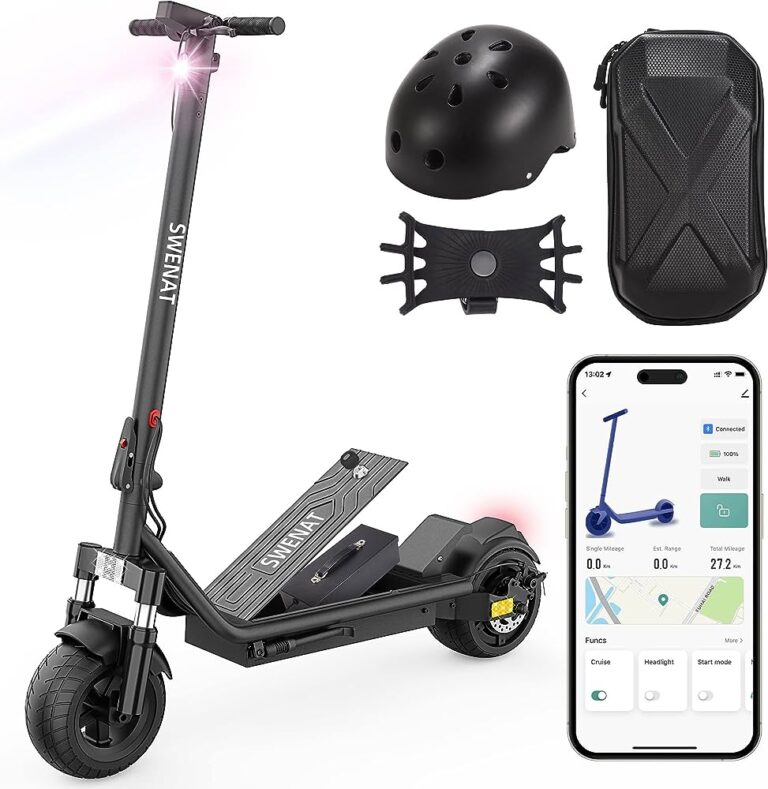Piaggio Scooter Not Turning on: Troubleshooting Tips to Get You Back on the Road

Piaggio scooter not turning on? Check the battery and verify the ignition switch is functioning properly.
If both are in working order, it could be a problem with the starter motor or the spark plug. Consult a professional for further assistance. Piaggio scooters are popular for their reliability and efficiency, but like any vehicle, they can sometimes encounter issues.
One frustrating problem is when your Piaggio scooter fails to turn on. This can be caused by a variety of factors, such as a dead battery or a faulty ignition switch. We will explore the potential reasons why your Piaggio scooter may not be turning on and provide some troubleshooting steps to help you get back on the road.
Common Causes For A Piaggio Scooter Not Starting
There are several common causes for a Piaggio scooter not starting, including a dead battery, faulty spark plug, clogged fuel filter, flooded engine, or a malfunctioning ignition switch. Checking these components can help diagnose the issue and get your scooter back on the road.
Is your Piaggio scooter giving you trouble and refusing to start? Don’t worry, we’ve got you covered. In this section, we will discuss the common causes for a Piaggio scooter not starting. Identifying the root cause of the issue will help you resolve the problem quickly and get back on the road in no time.
Dead Battery
A dead battery is one of the primary reasons why your Piaggio scooter may not start. Here are a few factors that contribute to a dead battery:
- Battery Age: Over time, batteries lose their capacity to hold a charge. If your battery is old and worn out, it may no longer have enough power to start the scooter.
- Parasitic Drain: Leaving accessories such as lights or a phone charger connected to your scooter for an extended period can drain the battery. Make sure to disconnect any unused accessories.
- Faulty Charging System: A faulty charging system can prevent your battery from recharging properly. This can be caused by a defective alternator or voltage regulator.
To troubleshoot a dead battery issue, you can follow these steps:
- Check the battery terminals for corrosion or loose connections.
- Use a multimeter to test the voltage of the battery. If it reads below 12 volts, it will likely need to be recharged or replaced.
- Jump-start your scooter using jumper cables and another vehicle’s battery.
- If the battery repeatedly dies, it may be time to replace it.
Fuel System Issues
Problems with the fuel system can also prevent your Piaggio scooter from starting. Here are the main culprits:
- Empty Fuel Tank: It may seem obvious, but sometimes the scooter won’t start simply because the fuel tank is empty. Always ensure you have enough fuel before setting off.
- Clogged Fuel Filter: A clogged fuel filter can restrict the flow of fuel to the engine, resulting in starting issues. Regularly check and clean or replace the fuel filter as needed.
- Carburetor Problems: A malfunctioning carburetor can lead to improper fuel-air mixture, causing starting problems. Cleaning or adjusting the carburetor may resolve the issue.
- Fuel Contamination: If the fuel has been contaminated with water or dirt, it can disrupt the combustion process. Drain the old fuel and refill with clean fuel.
To troubleshoot fuel system issues, you can take the following steps:
- Check the fuel level and ensure it is not empty.
- Inspect the fuel lines and filter for any blockages or damage.
- Clean or adjust the carburetor if necessary.
- If fuel contamination is suspected, drain the old fuel and refill with fresh gasoline.
Ignition Problems
Ignition problems can be a major cause of a Piaggio scooter failing to start. Here are some common ignition issues:
- Faulty Spark Plug: A worn-out or faulty spark plug can prevent the scooter from starting. Carefully inspect the spark plug and replace it if necessary.
- Ignition Coil Failure: If the ignition coil fails, it won’t produce the necessary voltage to ignite the fuel mixture. Check the ignition coil and replace it if needed.
- Faulty Starter Motor: A malfunctioning starter motor can prevent the engine from cranking. Inspect the starter motor and replace it if it is defective.
To troubleshoot ignition problems, you can follow these steps:
- Inspect the spark plug for signs of wear or damage. Replace it if necessary.
- Check the ignition coil for proper functionality. Test the coil with a multimeter if required.
- Inspect the starter motor for any visible issues. If it is not functioning properly, consider replacing it.
Remember, diagnosing and fixing mechanical issues can be challenging. When in doubt, it’s always best to consult a professional mechanic for a comprehensive inspection and repairs.
Dead Battery: How To Diagnose And Fix
If your Piaggio scooter is not turning on, it could be due to a dead battery. Learn how to diagnose and fix this issue with our helpful guide.
Piaggio scooters are a popular mode of transportation that can provide convenience and fun for riders. However, encountering issues with your scooter can put a damper on your plans. One common problem is a dead battery, which can leave you stranded and frustrated.
Fortunately, diagnosing and fixing this issue is relatively simple. In this section, we will explore different methods to tackle the problem of a dead battery in your Piaggio scooter. Let’s dive in and get your scooter up and running again!
Checking The Battery Voltage
- To determine if the battery is the reason behind your scooter not turning on, you can check its voltage. Here’s how you can do it:
- Start by locating the battery, usually located under the seat or in a compartment at the front of the scooter.
- Use a voltmeter to measure the battery’s voltage. A fully charged battery should read around 12.6 volts.
- If the voltage is significantly lower, it may indicate that your battery is depleted and needs to be charged or replaced.
Jumpstarting The Scooter
- If your battery is low but not completely dead, you can try jumpstarting your Piaggio scooter. Follow these steps:
- Find a working vehicle with a similar voltage battery or use a portable jump starter.
- Connect the positive (+) cables to the positive terminals of both batteries.
- Connect the negative (-) cables to the negative terminal of the working battery and a metal part of your scooter away from the battery.
- Start the working vehicle or turn on the portable jump starter and let it run for a few minutes.
- Attempt to start your scooter. If it turns on, let it run for some time to charge the battery.
Replacing The Battery
- In some cases, the battery may be beyond repair and need to be replaced. Here’s how you can replace the battery in your Piaggio scooter:
- Start by finding a suitable replacement battery that matches your scooter’s specifications.
- Locate the old battery and remove any protective covers or terminals connected to it.
- Carefully disconnect the negative (-) and positive (+) terminals, taking note of their positions for reconnection.
- Remove the old battery from its compartment.
- Install the new battery in the same position, ensuring it fits securely.
- Reconnect the positive (+) and negative (-) terminals in the correct order.
- Double-check all connections and make sure they are tight and secure.
Remember, taking proper care of your Piaggio scooter’s battery will help prolong its lifespan and prevent future issues. Regularly checking the battery voltage and charging it when necessary can save you from unexpected breakdowns on the road. In the next section, we will explore another potential cause for your scooter not turning on: a faulty ignition switch.
Stay tuned for more troubleshooting tips!
Fuel System Issues: Troubleshooting Tips
Having trouble getting your Piaggio scooter to start? It could be due to fuel system issues. Check the fuel pump, filter, and lines for any clogs or damage.
If you own a Piaggio scooter that won’t turn on, one of the possible culprits could be a fuel system issue. Problems with the fuel level, fuel lines, or carburetor can prevent your scooter from starting up. Don’t worry, though! In this section, we will provide you with some troubleshooting tips to help you get to the bottom of the issue and get your scooter running again.
Checking The Fuel Level:
- Inspect the fuel gauge or the fuel tank to ensure the scooter has an adequate amount of fuel.
- If the fuel level is low, refuel the scooter and attempt to start it again.
- Take note of any fuel leaks or unusual smells, as these could indicate further issues with the fuel system.
Inspecting The Fuel Lines:
- Start by visually inspecting the fuel lines for any signs of damage, such as cracks or leaks.
- Ensure the fuel lines are connected securely to the fuel tank and the carburetor.
- If you find any damaged or loose fuel lines, replace or reattach them accordingly.
Cleaning The Carburetor:
- Begin by removing the air filter cover and the air filter itself.
- Locate the carburetor and carefully remove it from the scooter.
- Use a carburetor cleaner to clean any dirt, debris, or clogs that may be affecting its performance.
- Pay close attention to the jets and passages, ensuring they are clear from any blockages.
- Reassemble the carburetor and reinstall it in the scooter before attempting to start the engine again.
By following these troubleshooting tips, you can address some common fuel system issues that may prevent your Piaggio scooter from turning on. Remember to check the fuel level, inspect the fuel lines, and clean the carburetor if necessary. If the problem persists, it is recommended to consult a professional mechanic for further assistance.
Keep in mind that proper maintenance and regular inspections can help prevent future issues with your scooter’s fuel system. Happy riding!
Ignition Problems: What To Look Out For
Having trouble starting your Piaggio scooter? Don’t fret! This article examines common ignition problems to watch out for, providing helpful insights on why your scooter might not be turning on. Discover solutions and tips to get your scooter back on the road in no time.
Piaggio Scooter Not Turning on:
Having trouble starting your Piaggio scooter? Ignition problems may be the culprit. Don’t worry, we’ve got you covered. In this section, we’ll explore some common ignition issues and provide you with steps to diagnose and resolve them. So, let’s dive in and get your scooter back on the road!
Checking The Spark Plug
A faulty spark plug can prevent your Piaggio scooter from turning on. Here are a few things to keep in mind when checking the spark plug:
- Inspect the spark plug for any signs of damage or corrosion.
- Ensure that the spark plug is securely connected to the ignition coil.
- Measure the spark plug gap using a feeler gauge – it should match the manufacturer’s specifications.
- If the spark plug is dirty, clean it using a wire brush or replace it if necessary.
- Remember to reconnect the spark plug wire firmly after cleaning or replacing the spark plug.
Testing The Ignition Coil
The ignition coil plays a crucial role in generating the spark needed for your scooter to start. Follow these steps to test the ignition coil:
- Locate the ignition coil, usually positioned near the spark plug.
- Inspect the ignition coil for any visible damage or loose connections.
- Use a multimeter to measure the primary and secondary resistance of the ignition coil, referring to your scooter’s manual for the specified values.
- If the resistance readings are outside the recommended range, it’s likely that the ignition coil is defective and needs to be replaced.
Check The Kill Switch
The kill switch, also known as the engine cutoff switch, is a safety feature that can unintentionally prevent your scooter from starting. Here’s what you should do:
- Ensure that the kill switch is in the “on” or “run” position.
- Check if the kill switch is damaged or stuck in the “off” position.
- If the kill switch appears to be faulty, consider replacing it or consulting a professional for further assistance.
By checking the spark plug, testing the ignition coil, and inspecting the kill switch, you can troubleshoot common ignition issues with your Piaggio scooter. Remember, if you’re unsure or unable to resolve the problem on your own, it’s always best to consult a qualified mechanic or Piaggio service center.
Now, you’re one step closer to revving up your scooter and hitting the road!
Additional Troubleshooting Steps
Having trouble with your Piaggio scooter not turning on? Try these additional troubleshooting steps to get your scooter up and running again.
Checking The Fuse:
- Start by locating the fuse box of your Piaggio scooter. It is usually located under the seat or near the battery.
- Carefully open the fuse box cover and visually inspect the fuses for any signs of damage or blown fuses.
- If you notice a blown fuse, replace it with a new fuse of the same amp rating.
- Make sure the fuse is securely seated in the fuse holder.
- Close the fuse box cover and attempt to start the scooter.
Inspecting The Wiring:
- Inspect the wiring harness of your Piaggio scooter for any visible damage, such as frayed or broken wires.
- Pay close attention to the wiring near the handlebars, ignition switch, and connections to the battery.
- If you find any damaged wiring, consider consulting a professional mechanic or electrician to repair or replace it.
- Ensure all wiring connections are tight and secure.
- Test the scooter again to see if the issue is resolved.
Testing The Starter Motor:
- Locate the starter motor on your Piaggio scooter. It is typically found near the engine or transmission.
- Disconnect the negative terminal of the battery to prevent any electrical accidents.
- Using a multimeter set to the resistance or continuity mode, test the starter motor’s terminals for any signs of a short circuit or open circuit.
- If the multimeter readings indicate a faulty starter motor, it may need to be replaced.
- Consult a trusted mechanic or service center for further diagnosis and repairs.
By following these additional troubleshooting steps, you can attempt to identify and resolve issues with your Piaggio scooter not turning on. Checking the fuse, inspecting the wiring, and testing the starter motor can help pinpoint the root cause of the problem, allowing you to take appropriate action.
If the issue persists, it is recommended to seek professional assistance for a more thorough diagnosis and repair.

Credit: carrierollwagen.com
Preventive Maintenance Tips To Keep Your Piaggio Scooter Running
Keep your Piaggio scooter in top shape with these preventive maintenance tips. If your scooter is not turning on, check the battery, ignition switch, and fuse. Regularly inspect the spark plug, air filter, and fuel system to ensure proper functioning.
Regularly Check the Battery:
- It’s important to regularly check the battery of your Piaggio scooter to ensure it’s in good condition and prevent any starting issues.
- Inspect the battery terminals for any signs of corrosion. If you notice corrosion, clean it off with a mixture of baking soda and water.
- Check the battery’s charge level using a multimeter. A healthy battery should have a voltage reading between 12.4 and 12.7 volts.
- If the battery is low on charge, use a battery charger to recharge it. Avoid using a car battery charger as it can damage the scooter’s battery.
Clean the Fuel System:
- Keeping the fuel system of your Piaggio scooter clean is crucial for its optimal performance.
- Start by inspecting the fuel filter and replacing it if it’s dirty or clogged. A clean fuel filter ensures proper fuel flow and reduces the risk of engine issues.
- Regularly clean the carburetor to remove any dirt or debris that may have accumulated. This will prevent fuel flow problems and maintain the scooter’s efficiency.
- Use a fuel stabilizer to prevent the fuel from deteriorating if you plan on storing your scooter for an extended period.
Perform Routine Inspections:
- Conduct regular inspections of your Piaggio scooter to identify any potential problems early on.
- Check the tires for proper inflation and tread wear. Underinflated or worn-out tires can affect the handling and safety of the scooter.
- Inspect the brakes for any signs of wear or damage. Replace worn brake pads and ensure the brake system is working effectively.
- Examine the drive belt for any cracks or deterioration. A worn-out belt can cause slipping or poor acceleration.
- Check the lights, indicators, and horn to ensure they are all functioning correctly. Replace any faulty bulbs or connections.
Remember, preventive maintenance is essential for keeping your Piaggio scooter running smoothly and avoiding costly repairs. By regularly checking the battery, cleaning the fuel system, and performing routine inspections, you can enjoy a reliable and efficient ride every time.
When To Seek Professional Help
If your Piaggio scooter is not turning on, it may be time to seek professional help. With their expertise, they can diagnose the issue and provide the necessary repairs to get you back on the road.
Understanding The Limitations Of Diy
- Performing DIY repairs and maintenance on your Piaggio scooter can be a fulfilling and cost-effective way to keep it in good shape. However, it’s important to understand that there are limitations to what you can accomplish on your own. Here are some things to consider:
- Lack of expertise: While you may have a basic understanding of how your Piaggio scooter works, professional mechanics have extensive knowledge and experience that you may not possess. They are trained to diagnose and fix complex issues that may be beyond your capabilities.
- Specialized tools and equipment: Scooter mechanics have access to specialized tools and equipment that are necessary for certain repairs. Without these tools, you may struggle to effectively solve certain issues or risk causing further damage to your scooter.
- Time and effort: DIY repairs can often take longer to complete compared to professional repairs. If you’re not experienced in scooter repairs, it’s likely that you’ll spend a considerable amount of time researching, troubleshooting, and learning. Additionally, you may experience setbacks along the way, resulting in frustration and delays.
Finding A Reliable Scooter Mechanic
- When it comes to seeking professional help for your Piaggio scooter, finding a reliable and competent mechanic is crucial. Here are some tips to help you find the right person for the job:
- Recommendations: Ask friends, family, or fellow scooter enthusiasts for recommendations. Their personal experiences can offer valuable insight into the quality of service provided by different mechanics or repair shops.
- Online reviews: Check online review platforms to see what others are saying about local scooter mechanics. Look for consistently positive reviews and feedback regarding their expertise, reliability, and customer service.
- Qualifications and certifications: Look for mechanics who have the necessary qualifications and certifications. These indicate that they have undergone specific training and adhere to industry standards.
- Specialization: Some mechanics specialize in working on specific scooter brands or models, such as Piaggio. Choosing a mechanic with expertise in your particular scooter can increase the chances of getting accurate diagnoses and efficient repairs.
- Trust and communication: Trust your instincts when interacting with a potential mechanic. Ensure they are attentive, responsive, and take the time to explain repairs or answer any questions you may have. Good communication is essential for a successful professional relationship.
Knowing When It’S Time To Call The Experts
- While there are certain repairs and maintenance tasks you can handle on your own, there are instances when it’s best to call in the experts. Here are some signs that indicate it’s time to seek professional help:
- Unusual sounds or smells: If your Piaggio scooter is making strange noises or emitting unusual smells, it could be a sign of a more serious underlying issue. A professional mechanic can quickly diagnose the problem and prevent further damage.
- Persistent issues: If you’ve attempted to fix the same problem multiple times without success, it’s a clear indicator that the issue may require professional expertise. Continuing to rely on trial and error can be costly and frustrating.
- Warranty considerations: If your scooter is still under warranty, attempting DIY repairs may void the warranty. In such cases, it’s best to let qualified mechanics handle the repairs to avoid any complications.
- Safety concerns: If you experience issues related to braking, steering, or any other crucial component of your scooter’s operation, it’s important to prioritize safety. Professional mechanics have the knowledge and tools to address these issues effectively.
- Overall peace of mind: Sometimes, it’s worth seeking professional help simply for the peace of mind it provides. Knowing that your Piaggio scooter is in the hands of a qualified mechanic can alleviate stress and ensure that the necessary repairs are done correctly.
Remember, while taking a DIY approach can be satisfying and cost-effective, there are instances when it’s best to leave the job to the experts. By understanding the limitations of DIY, finding a reliable mechanic, and knowing when it’s time to call in the professionals, you can keep your Piaggio scooter running smoothly and enjoy many worry-free rides.
Frequently Asked Questions For Piaggio Scooter Not Turning On
How Do You Turn On A Piaggio Scooter?
To turn on a Piaggio scooter, simply insert the key into the ignition and turn it clockwise.
Why Is My Vespa Not Turning On?
Possible answer: Your Vespa may not be turning on due to a variety of reasons such as a dead battery, ignition issues, or fuel problems.
How Do You Start A Piaggio Moped?
To start a Piaggio moped, insert the key, turn it clockwise, engage the brakes, then push the start button.
How Long Do Piaggio Scooters Last?
Piaggio scooters typically last for a long time, offering reliable performance and durability.
Conclusion
Troubleshooting issues with a Piaggio scooter that won’t turn on can be a frustrating experience. However, by following the steps outlined in this blog post, you can easily identify and resolve common issues that may be causing the problem. Start by checking the battery and ensuring it is properly charged, as this is often the root cause of the issue.
If the battery is not the problem, then you should inspect the ignition system, spark plug, and fuel system for any potential faults. Additionally, don’t forget to examine the wiring and connections to rule out any potential electrical issues. By methodically assessing each component, you can effectively diagnose and rectify the issue, saving yourself time and money.
Remember, regular maintenance and care can go a long way in preventing future problems and keeping your Piaggio scooter running smoothly.


